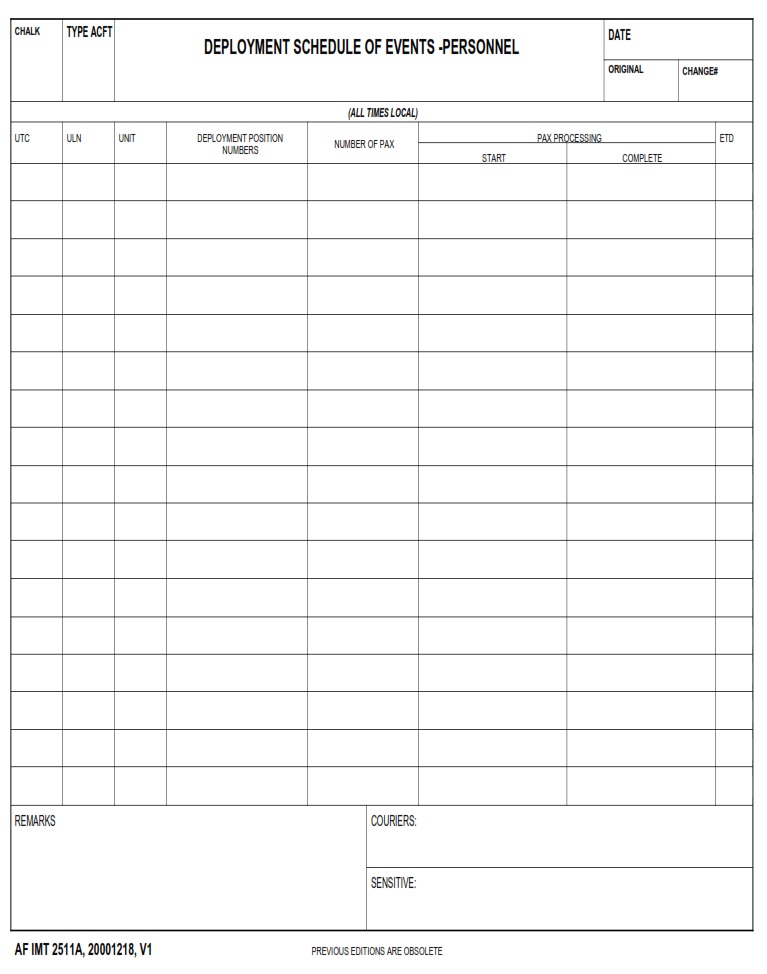AF-FORMS.COM – AF Form 2511A – Surface Weather Observations (Metar/Speci) – Are you ready to embark on a journey into the fascinating world of weather observation? If so, prepare to delve into the intricacies of AF Form 2511A – Surface Weather Observations (Metar Speci). This vital form serves as a crucial tool for meteorologists, pilots, and aviation professionals, providing detailed insights into current weather conditions that are essential for safe and efficient flight operations. From wind speed and direction to visibility and cloud cover, this article will unravel the secrets behind this important document and explore how it impacts decision-making in the aviation industry.
Have you ever wondered how pilots make informed decisions about takeoff and landing based on current weather conditions? The answer lies within AF Form 2511A – Surface Weather Observations (Metar Speci), a comprehensive record of meteorological data collected at airports around the world. As we uncover the significance of each element recorded on this form, you’ll gain a newfound appreciation for the meticulous work that goes into providing accurate weather information for aviation purposes. So buckle up as we navigate through the nuances of surface weather observations and discover their pivotal role in ensuring smooth skies for air travel.
Download AF Form 2511A – Surface Weather Observations (Metar/Speci)
| Form Number | AF Form 2511A |
| Form Title | Surface Weather Observations (Metar/Speci) |
| Edition Date | 12/18/2000 |
| File Size | 32 KB |
AF-Form-2511A-Surface-Weather-Observations-Metar-Speci.pdf (47 downloads )
What is an AF Form 2511A?
The AF Form 2511A, also known as Surface Weather Observations (METAR Speci), is a critical tool used by the United States Air Force to gather and record vital weather data for aviation operations. This form provides a standardized method for documenting current weather conditions at airfields, including temperature, wind speed and direction, visibility, cloud cover, and atmospheric pressure. These observations are essential for ensuring the safety of aircraft and personnel during takeoff, landing, and flight in various weather conditions.
Furthermore, the AF Form 2511A plays a crucial role in supporting mission planning and decision-making by providing accurate and detailed information about local weather patterns. It allows meteorologists and air traffic controllers to analyze atmospheric conditions in real-time and make informed assessments regarding flight safety and operational readiness. Additionally, this form facilitates communication between different branches of the military as well as civilian aviation authorities by providing standardized weather data that can be easily shared and interpreted across different agencies. Overall, the AF Form 2511A serves as a cornerstone in ensuring the safety and effectiveness of military aviation operations in diverse environmental settings.
Where Can I Find an AF Form 2511A?
If you’re wondering where to find an AF Form 2511A for surface weather observations (METAR SPECI), look no further than the official channels provided by the U.S. Air Force. The most reliable source for obtaining this form is through the Air Force e-Publishing website, which offers a comprehensive collection of forms and publications used by the Air Force.
Alternatively, you can also inquire about AF Form 2511A at your local Air Force base or installation. The weather operations personnel or designated authorities at these locations should be able to assist you in obtaining the necessary form for conducting accurate and reliable surface weather observations.
In addition, it’s worth noting that some third-party websites may offer downloadable versions of AF Form 2511A; however, it’s crucial to ensure that any form obtained from such sources is current and officially sanctioned by the U.S. Air Force to maintain compliance with regulations and standards.
AF Form 2511A – Surface Weather Observations (Metar/Speci)
In the world of aviation, accurate and timely weather observations are crucial for safe operations. The AF Form 2511A, also known as the Surface Weather Observations (Metar Speci), plays a vital role in providing detailed meteorological information to pilots and air traffic controllers. This form includes critical data such as wind direction and speed, visibility, cloud cover, temperature, dew point, and atmospheric pressure. These observations help aircraft operators make informed decisions about takeoffs, landings, and flight routes.
What makes the AF Form 2511A particularly important is its role in ensuring the safety of both military and civilian flights. Accurate surface weather observations enable pilots to anticipate potential hazards such as thunderstorms, fog, or strong winds that could affect their flight paths. Additionally, this data helps air traffic controllers provide timely advisories to incoming and departing aircraft for optimal operational efficiency. By understanding the nuances of filling out this form accurately and comprehensively, aviation personnel can enhance overall safety by mitigating weather-related risks in their daily operations.
